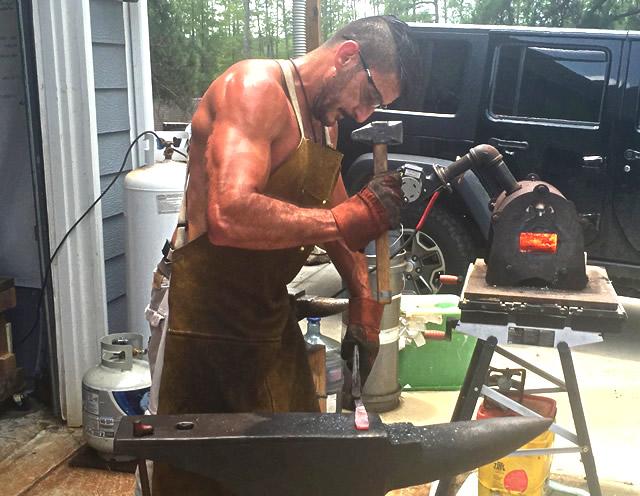Veterans' Voices: Michael Rodriguez

Michael "Rod" Rodriguez is a retired Special Forces Green Beret turned artist who continues to serve by using his art to educate others on the positive impact art truly has in everyday life, as well as to overcome his own wounds.
When I made my mask while a patient at NICoE, I found an opportunity to explore and try to explain what my thoughts and emotions were. It wasn’t a mirror where I would see my reflection, I was forced to look at myself in a completely different way. It offered a form of expression I had never been exposed to, a form of communication that wasn’t limited by the written word. This nonjudgmental and completely informal opportunity to speak to myself opened up avenues to explore my thoughts and emotions in ways I had not imagined. In the military it is always “mission” first. This is necessary in order for us to do our jobs which oftentimes are in environments of great stress. This way of thinking and training has made our military the most powerful and efficient in the world. However, this line of thinking has also led us to leave individual issues out of the equation. The mask became my mission, which for the first time, was myself. It allowed me to take ownership of what I was carrying around inside and come face to face with it. These themes are extremely important in that no one can address their individual issues if they don’t identify them. How do you defeat an enemy you don’t identify? You cant! My mask provided me this opportunity.
Creative art therapy as well as community engagement activities have provided the opportunity to not only share my form of expression and healing with the world but to also open the worlds eyes to the power of art. I was guilty myself of being an art agnostic; however today I do all I can to share how impactful art really is. This opportunity to educate others who have not had the exposure to art I did is one way I can continue my service.
I believe one of the needs that should be addressed when discussing the difficulties faced by veterans in treatment settings is that of keeping an open mind in treatment. This applies to both patient and provider. While treatment modalities and protocols provide baseline guidance for providers, the emphasis should always be on the individual patient. Likewise it is the individual patients responsibility to not only follow provider direction but to advocate for ones self as well. Art has many forms from painting to sculpting as well as blacksmithing and forging steel…treatment takes many forms as well. Art can bridge that gap.

